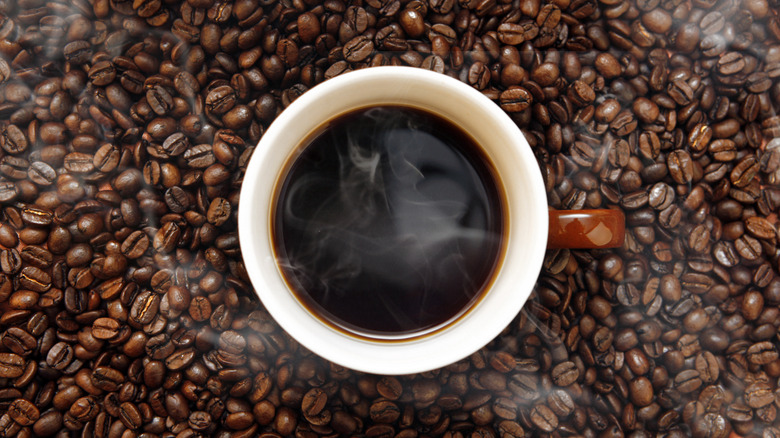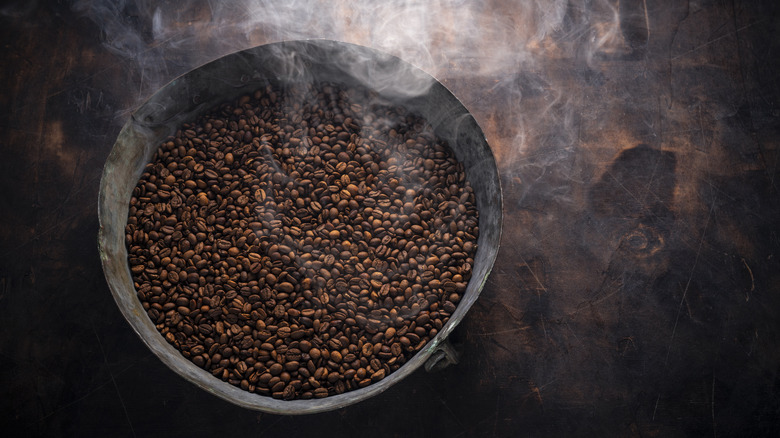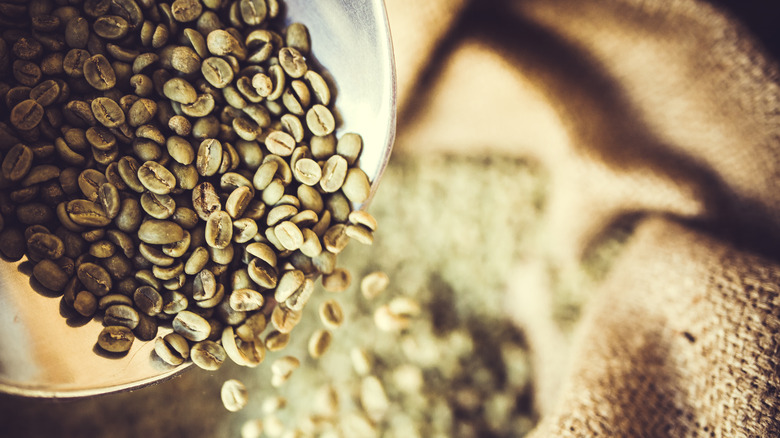Home Coffee Roasting: Stovetop Skillet Vs Oven
If you love coffee, there's a good chance you already know how you prefer your coffee to be roasted. But have you ever considered mastering the art of creating the perfect light, medium, or dark roast yourself? Although it's not the easiest hobby to take up, those who are ready to elevate their coffee knowledge may want to try roasting their own beans at home. Doing so gives you control over a crucial part of the process, helping you craft your ideal cup and deepening your appreciation for each brew.
When it comes to home-roasting coffee, there are two main methods: stovetop and oven roasting. Each approach has its advantages. In terms of effort and equipment, oven roasting is almost as straightforward as baking a batch of cookies — all you have to do is put the beans in a tray and pop them in the oven. Stovetop roasting, on the other hand, allows you to closely monitor the beans as they darken, enabling you to halt the process at precisely the right moment for your preferred flavor profile. It's worth experimenting with both methods when you're just starting out to determine what works best in your kitchen and to achieve the results you desire.
How to start home roasting
For coffee lovers, there's nothing quite like the aroma of freshly ground coffee first thing in the morning — especially when you've roasted the beans yourself. First, regardless of which roasting method you choose, open a window to ventilate any smoke that may arise during the roasting process.
For stovetop roasting: Preheat a large skillet over medium heat, then add nine ounces of coffee beans. Shake the pan or use a wooden spoon to stir the beans continuously as they cook. After about five minutes, you should hear a cracking sound. At this point, check the beans' color. Remove them from heat before they reach your desired roast level, as they will continue to cook afterward. This method is ideal for those who want to carefully monitor the process to achieve a specific roast, particularly if you prefer a lighter, less smoky flavor.
For oven roasting: Preheat your oven to 500 degrees Fahrenheit. Spread the coffee beans evenly on a perforated pan and place it in the oven. Cook for approximately seven minutes. You should also hear a cracking sound with this method; remove the beans from the oven shortly thereafter. This technique requires less hands-on time than stovetop roasting, but it may result in beans that are somewhat smoky and unevenly roasted, depending on your oven's heating and ventilation capabilities.
For both methods, after roasting, place the beans in a colander to cool. Wait at least 12 hours before storing them in an airtight container.
Buying unroasted coffee beans
The two most common types of coffee beans are Arabica and Robusta. Because Robusta beans tend to be less expensive, you might want to start with these when first attempting home roasting. While it may be challenging to find a brick-and-mortar shop that sells raw coffee beans, online retailers offer a plethora of options that you can filter according to your preferences. Upon arrival, your raw beans will be a pale green color that turns brown only after roasting — the final hue's darkness is up to you.
Unless you reside in a tropical climate, the coffee you drink probably travels a considerable distance to reach you. If you're interested in the history of coffee or the current trend of Yemeni-style coffee, you might consider sourcing beans from Yemen. For those in the U.S. seeking something more local, Hawaiian-grown beans like the rare Kona variety are a good option — though there are many rare types of coffee beans we'd recommend trying at least once. When purchasing, consider the type of roast you prefer. Some suppliers provide tasting notes, which can help you decide which flavor profiles work best with light, medium, or dark roasts. Light roasts are generally more fruity and floral, whereas darker roasts tend to be bittersweet and full-bodied.



